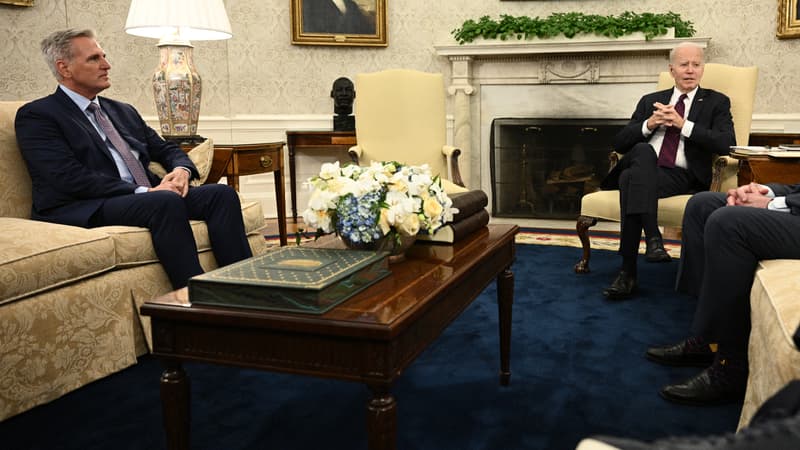President Joe Biden and Republican leader Kevin McCarthy will meet in person on Monday to continue their grueling negotiations on the US debt ceiling.
There are only ten days left for the two sides to reach an agreement and allow the United States to continue paying its bills. But the negotiations seem for the moment completely stalled.
“See you tomorrow in person to continue with the negotiations,” he announced, information quickly confirmed by the White House.
Like almost all major economies, the United States lives on credit. But, it is an American peculiarity, it is the prerogative of Congress to vote to raise the maximum amount of public debt that the world’s largest economy is allowed to accumulate.
This year, Republicans refuse to raise this famous “ceiling” unconditionally, demanding drastic budget cuts before giving the green light. The Democrats refuse. And each camp accuses the other of being responsible for this situation.
Traveling to the G7 in Japan, Joe Biden criticized the conservative proposals on Sunday: “It is time for the other side to drop their extreme positions, because a lot of what they have already proposed is just, frankly, unacceptable,” he said. believing, however, that a solution could still be found.
Consequences for the world economy
In fact, it is very common for last-minute transactions to take place in these types of files, but there is very little time left in the United States to avoid a default.
This unprecedented situation would have potentially catastrophic consequences for the US and global economies.
In fact, the world’s largest economy would not only be unable to pay bills and salaries, but also to pay its creditors.
For the first time, holders of US Treasuries, the king of global finance, were no longer able to recoup their investment. That could happen as soon as June 1, according to Treasury Secretary Janet Yellen.
He also ruled out the possibility of resorting to the 14th amendment to the US Constitution, which could theoretically allow circumvention of the obligation to raise the ceiling. Indeed, the article stipulates that “the validity of the public debt of the United States (…) should not be questioned.”
It doesn’t appear that it can “be used appropriately in these circumstances, given the legal uncertainty surrounding it and the tight deadline,” Janet Yellen said Sunday.
Joe Biden had indicated, a bit earlier, that he was looking into this possibility, noting however that the question was whether it “can be done and invoked in time.”
Cutting federal spending, sticking point
However, optimism was rampant midweek, following a meeting between Democratic and Republican congressional officials with Joe Biden at the White House.
But the proposal made Friday night by the Republican team “was a big step backwards,” according to White House spokeswoman Karine Jean-Pierre, who deplored “a set of extreme partisan demands.”
He pointed a finger at Republican officials, under the thumb of those close to Donald Trump, “who (threaten) to bring our nation into default for the first time in our history.”
Kevin McCarthy had also mentioned on Saturday night “a step back in the negotiations”, but by the White House, accusing “the left wing of the Democratic Party” of being “in control”.
The sticking point: Republicans’ demand to cut federal spending, back to 2022 levels. That is, cut $130 billion in spending. A red line for the Democrats.
The Biden administration proposes to cut spending and raise taxes for the wealthy and corporations that today benefit from generous tax breaks. What Republicans refuse.
Source: BFM TV


